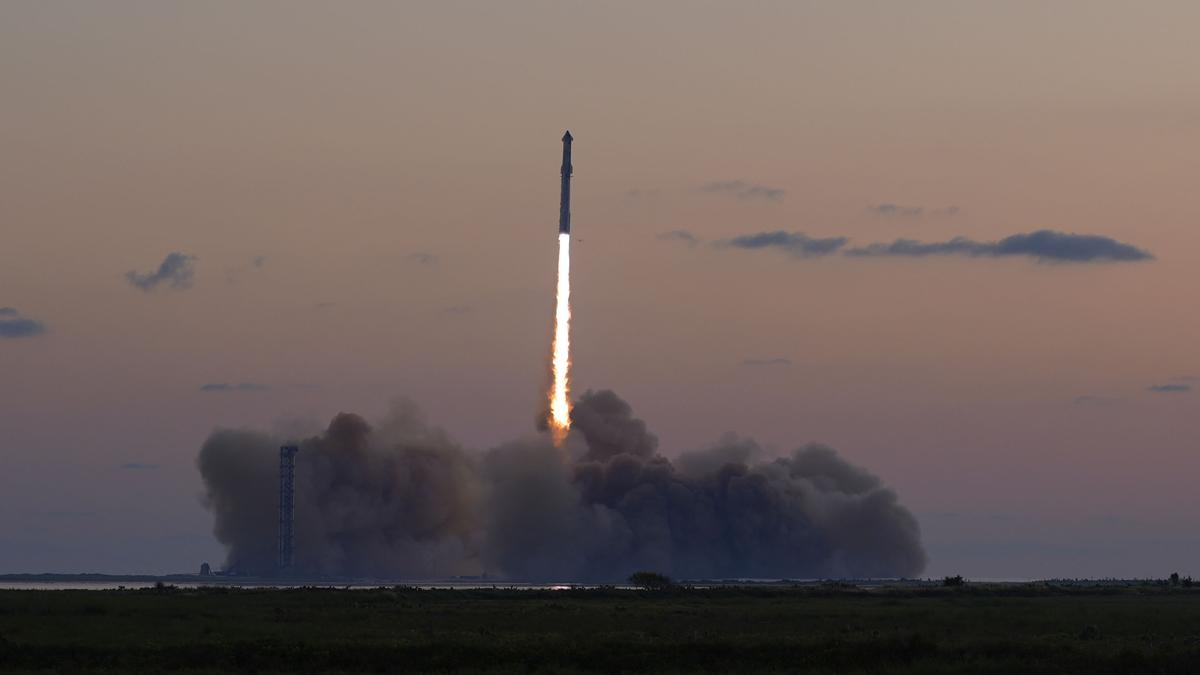
SpaceX’s mega rocket Starship lifts off from Starbase for a test flight in Boca Chica, Texas on Sunday (Oct. 13, 2024). Photo Credit: AP
SpaceX launched its massive Starship rocket on Sunday (Oct. 13, 2024) on its boldest test flight yet, latching the booster back to the pad with mechanical arms.
About 400 feet (121 meters) high, the empty Starship took off at sunrise over the southern tip of Texas near the Mexican border. It passed over the Gulf of Mexico like the four Starships before it, which were destroyed either shortly after takeoff or when falling into the ocean. The previous flight in June was the most successful so far, completing its flight without an explosion.

This time, SpaceX founder and CEO Elon Musk increased the challenge and risk. The company brought the first stage booster back to the pad where it had blasted off seven minutes earlier. The launch tower had monstrous metal arms, called chopsticks, that caught the 232-foot (71-meter) falling booster.
“Are you kidding me?” SpaceX’s Dan Huot observes with excitement from near the launch site. “I’m shaking right now.”
“This is a day for the engineering history books,” said SpaceX’s Kate Tice from SpaceX headquarters in Hawthorne, California.
It was up to the flight director to decide in real time with manual controls whether or not to attempt a landing. SpaceX said both the booster and launch tower should be in good, stable condition. Otherwise, it was going to end up in the Gulf like the previous one. Everything was anticipated to be up for grabs.
Once released from the booster, the retro-looking stainless steel spacecraft on top continued to circle the globe aiming for a controlled splashdown in the Indian Ocean. June’s flight was ultimately cut short after the pieces separated. SpaceX upgraded the software and reworked the heat shield while improving the thermal tiles.

SpaceX has been recovering first-stage boosters from its smaller Falcon 9 rockets for nine years, after delivering satellites and crew into orbit from Florida or California. But they land on floating marine platforms or concrete slabs many miles from their launch pads – not on them.
Recycling Falcon boosters has sped up launch rates and saved SpaceX millions. Musk intends to do the same for Starship, the largest and most powerful rocket ever built with 33 methane-fueled engines on a single booster. NASA has ordered two Starships to land astronauts on the Moon later this decade. SpaceX intends to use Starship to send people and supplies to the Moon and eventually Mars.
published – October 13, 2024 07:13 PM IST
